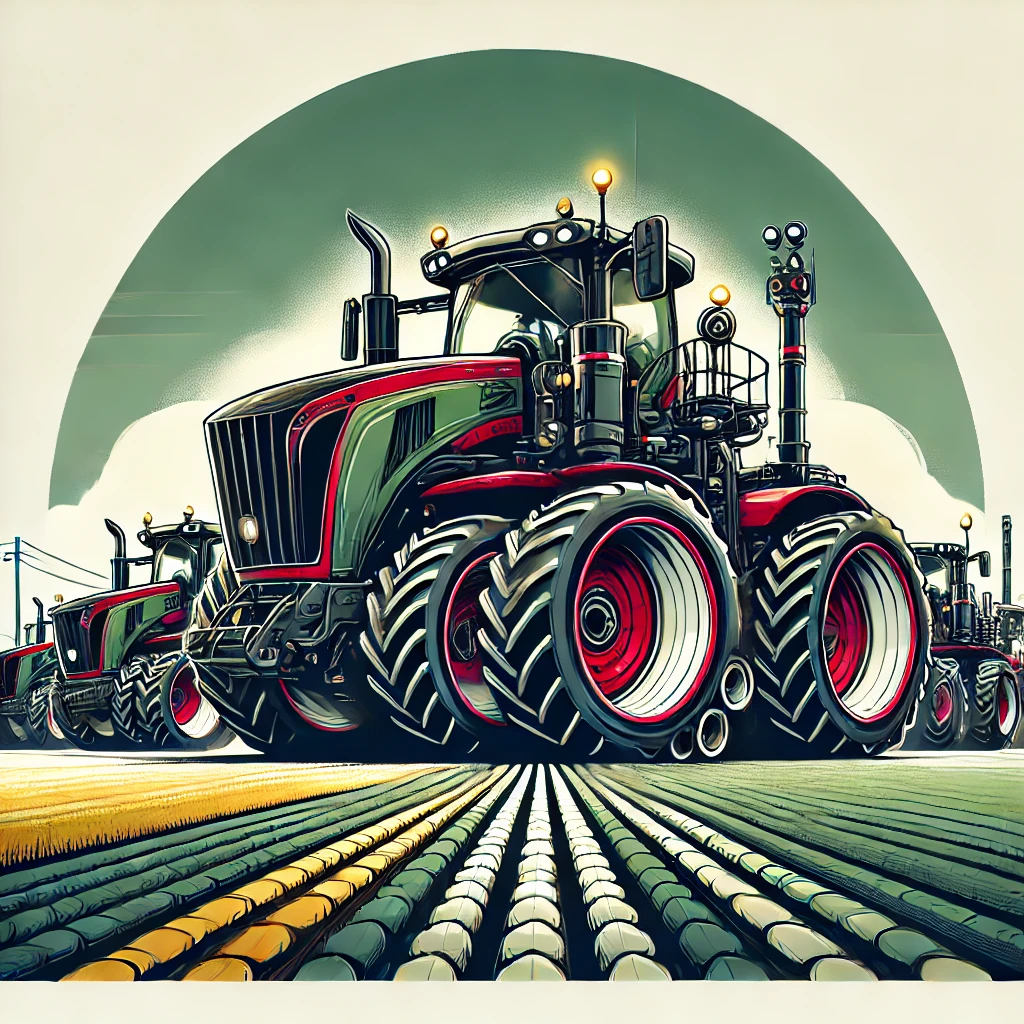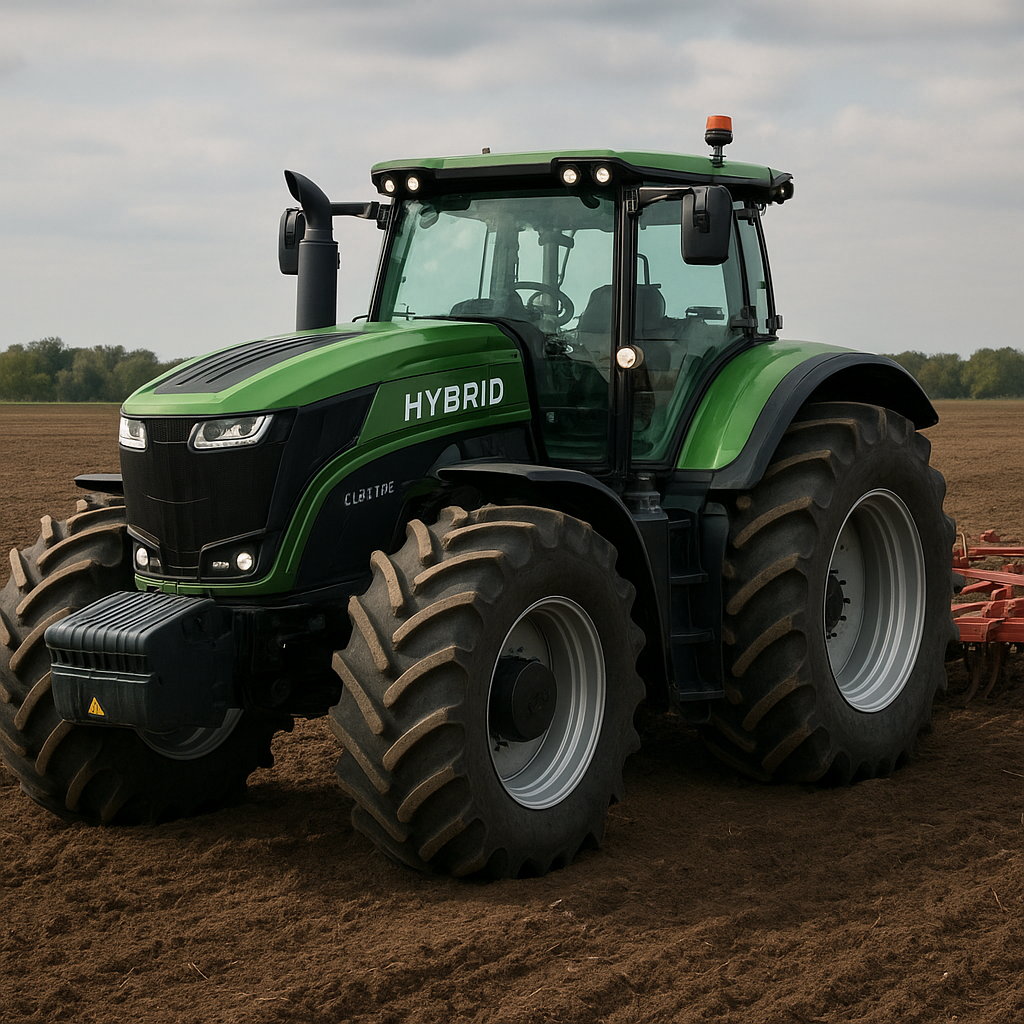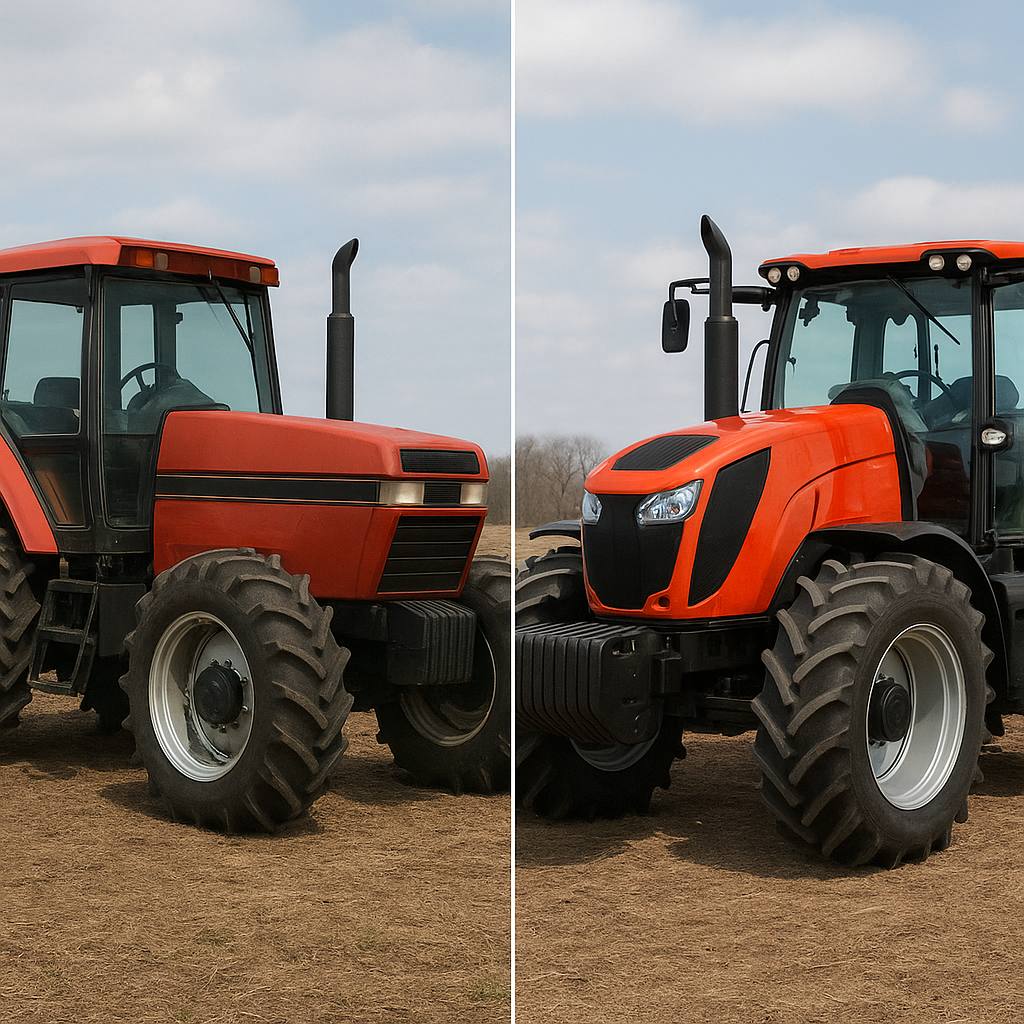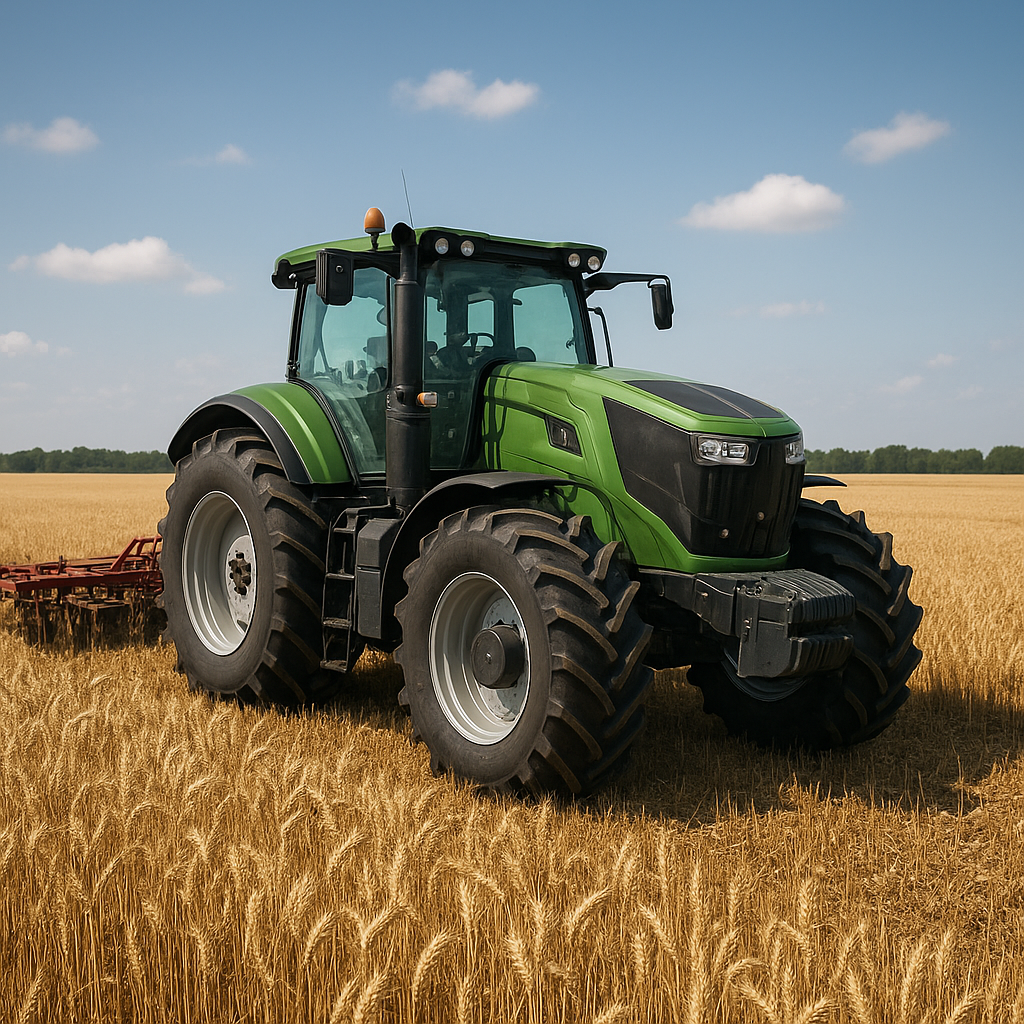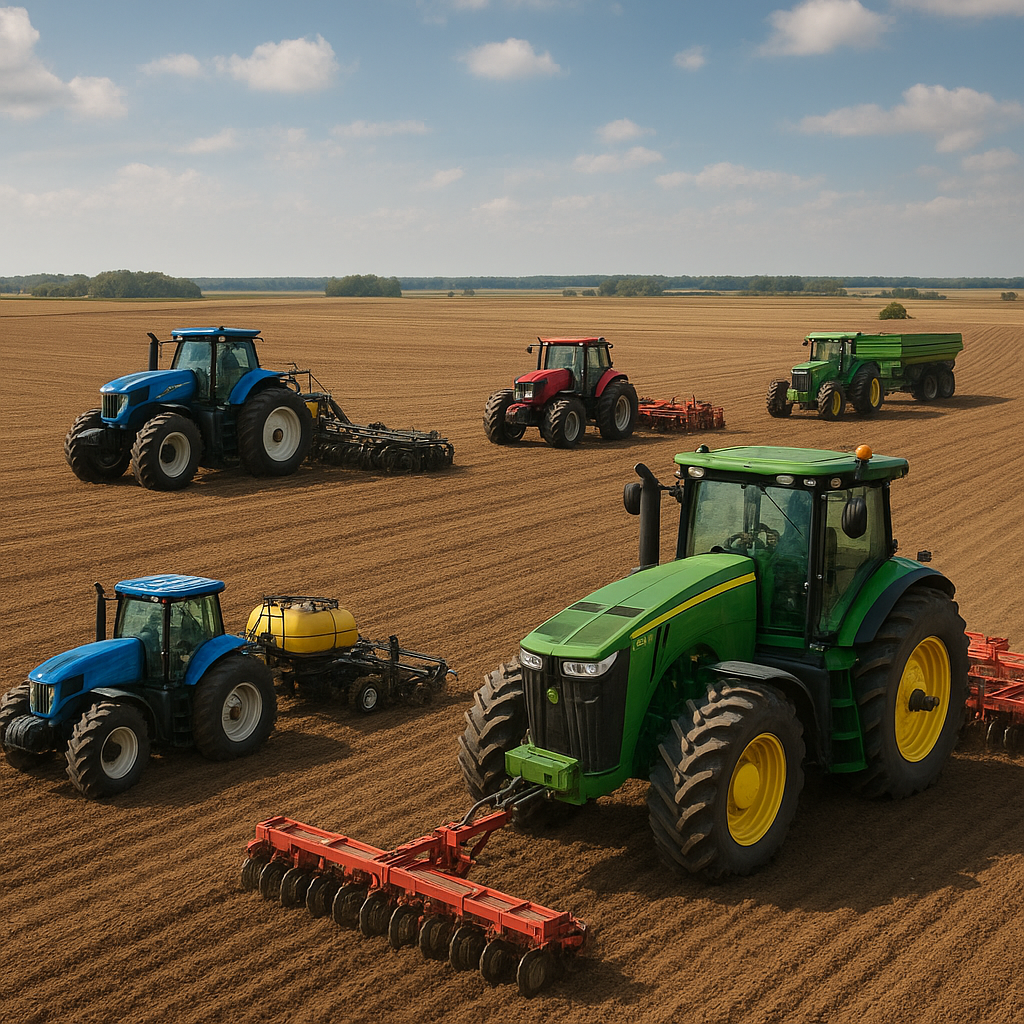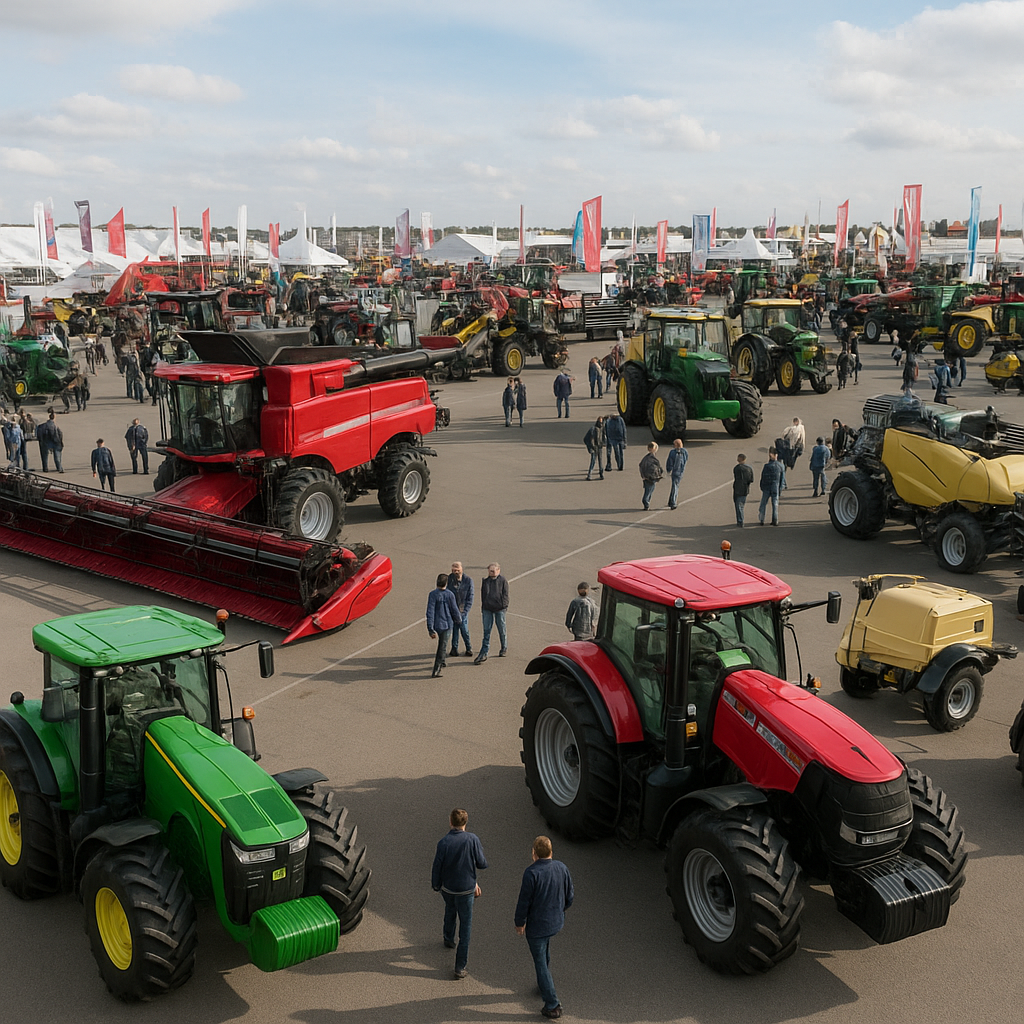Row-crop tractors are essential machines in modern agriculture, known for their versatility and precision in farming operations. These tractors are designed to handle a variety of tasks, from planting and cultivating to harvesting, making them indispensable for farmers aiming to maximize efficiency and productivity.
Design and Features of Row-Crop Tractors
Row-crop tractors are specifically engineered to navigate between rows of crops without damaging the plants. This design feature is crucial for maintaining the health and yield of the crops. The tractors typically have adjustable wheel spacing, allowing them to accommodate different row widths. This adaptability makes them suitable for a wide range of crops, including corn, soybeans, cotton, and vegetables.
One of the standout features of row-crop tractors is their high ground clearance. This allows them to pass over tall crops without causing damage. Additionally, these tractors are equipped with advanced steering systems, often including GPS and auto-steering capabilities. These technologies enhance precision in planting and cultivating, ensuring that each row is perfectly aligned and reducing the risk of overlap or missed areas.
Another important aspect of row-crop tractors is their powerful engines. These machines need to perform a variety of tasks, from pulling heavy implements to operating complex machinery. As a result, they are equipped with robust engines that provide the necessary power and torque. Many modern row-crop tractors also feature fuel-efficient engines, which help reduce operating costs and minimize environmental impact.
Applications and Benefits in Modern Farming
Row-crop tractors are used in a wide range of farming applications, making them one of the most versatile pieces of equipment on a farm. Their primary use is in planting and cultivating crops. The precision offered by these tractors ensures that seeds are planted at the correct depth and spacing, which is critical for optimal growth and yield. The ability to adjust wheel spacing and ground clearance also allows farmers to use the same tractor for different crops, reducing the need for multiple machines.
In addition to planting and cultivating, row-crop tractors are also used for spraying pesticides and fertilizers. The precision steering and GPS capabilities ensure that these chemicals are applied evenly and accurately, reducing waste and minimizing the impact on the environment. This precision is particularly important in modern farming, where sustainability and efficiency are key concerns.
Harvesting is another area where row-crop tractors excel. These machines can be equipped with various attachments, such as combines and balers, to assist in the harvesting process. The high ground clearance and powerful engines make it easy for row-crop tractors to handle the demands of harvesting, even in challenging conditions.
One of the significant benefits of row-crop tractors is their ability to improve overall farm productivity. By using a single machine for multiple tasks, farmers can save time and reduce labor costs. The precision offered by these tractors also leads to better crop yields, as plants are given the optimal conditions for growth. Additionally, the advanced technologies integrated into modern row-crop tractors, such as GPS and auto-steering, help reduce the margin of error and increase efficiency.
Technological Advancements in Row-Crop Tractors
The evolution of row-crop tractors has been marked by significant technological advancements. One of the most notable developments is the integration of precision farming technologies. GPS and auto-steering systems have revolutionized the way farmers plant and cultivate their crops. These technologies allow for precise control over the tractor’s movements, ensuring that each row is perfectly aligned and reducing the risk of overlap or missed areas.
Another important advancement is the development of telematics systems. These systems allow farmers to monitor and manage their tractors remotely, providing real-time data on the machine’s performance and condition. This information can be used to optimize operations, schedule maintenance, and reduce downtime. Telematics systems also enable farmers to track fuel consumption and other key metrics, helping them make more informed decisions about their equipment and operations.
Electric and hybrid row-crop tractors are also becoming more common. These machines offer several benefits over traditional diesel-powered tractors, including reduced emissions and lower operating costs. Electric and hybrid tractors are particularly well-suited for tasks that require frequent stops and starts, such as planting and cultivating. The development of these environmentally friendly tractors is an important step towards more sustainable farming practices.
Another area of technological advancement is in the development of autonomous row-crop tractors. These machines are capable of operating without a human driver, using advanced sensors and artificial intelligence to navigate fields and perform tasks. Autonomous tractors have the potential to significantly increase efficiency and reduce labor costs, as they can operate around the clock and in all weather conditions. While fully autonomous tractors are still in the early stages of development, they represent an exciting future for row-crop farming.
Challenges and Future Prospects
Despite the many benefits of row-crop tractors, there are also challenges associated with their use. One of the primary challenges is the cost of these machines. Row-crop tractors are a significant investment, and the advanced technologies integrated into modern models can drive up the price even further. For small and medium-sized farms, the cost of purchasing and maintaining a row-crop tractor can be prohibitive.
Another challenge is the complexity of these machines. The advanced technologies that make row-crop tractors so effective also require specialized knowledge to operate and maintain. Farmers need to be trained in the use of GPS, auto-steering, and telematics systems, and they must be able to troubleshoot and repair these systems when issues arise. This can be a barrier for some farmers, particularly those who are less familiar with modern technology.
Despite these challenges, the future prospects for row-crop tractors are promising. Ongoing advancements in technology are likely to make these machines even more efficient and effective. For example, improvements in battery technology could lead to more widespread adoption of electric and hybrid tractors. Similarly, advancements in artificial intelligence and machine learning could enhance the capabilities of autonomous tractors, making them more reliable and versatile.
In addition to technological advancements, there is also a growing focus on sustainability in agriculture. Row-crop tractors have the potential to play a key role in sustainable farming practices, as they can help reduce the use of chemicals and minimize soil compaction. By adopting precision farming techniques and using environmentally friendly equipment, farmers can improve their productivity while also protecting the environment.
Conclusion
Row-crop tractors are a vital component of modern agriculture, offering versatility and precision in a wide range of farming applications. These machines are designed to navigate between rows of crops without causing damage, and they are equipped with advanced technologies that enhance their performance and efficiency. While there are challenges associated with the use of row-crop tractors, ongoing advancements in technology and a growing focus on sustainability are likely to drive further improvements in these machines. As a result, row-crop tractors will continue to play a crucial role in helping farmers maximize their productivity and achieve their goals.
